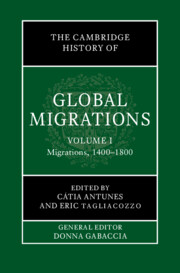2 results in The Cambridge History of Global Migrations

The Cambridge History of Global Migrations
-
- Published online:
- 12 May 2023
- Print publication:
- 01 June 2023

The Cambridge History of Global Migrations
-
- Published online:
- 12 May 2023
- Print publication:
- 01 June 2023

